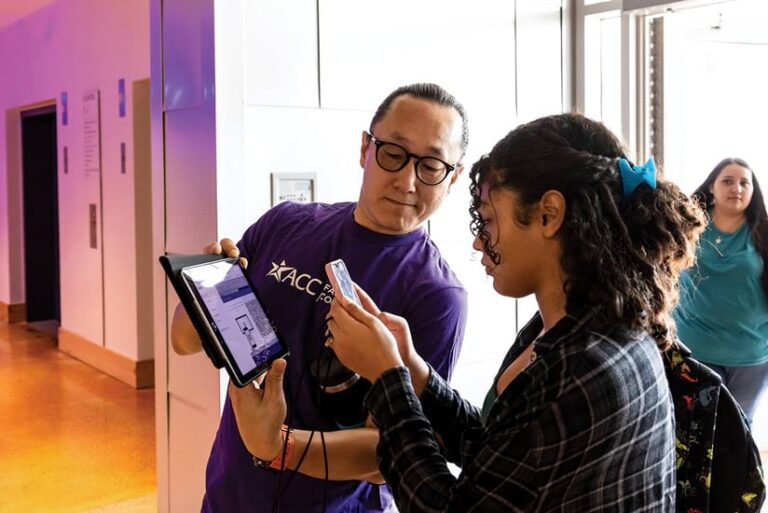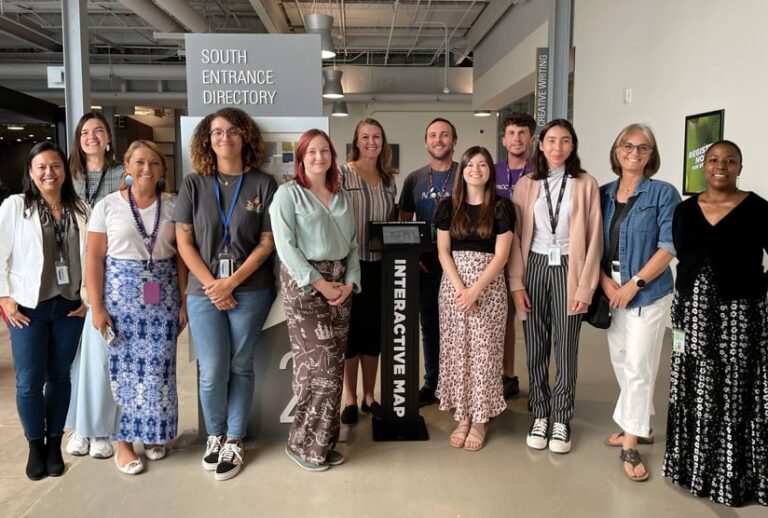Navigating the sprawling Austin Community College (ACC) District, with its 11 campuses, 76 buildings, and nearly 4.5 million square feet of interior space, has always been a challenge. Every semester, volunteers are stationed to assist students in finding their way, yet many students still struggle to locate the right room, especially on larger campuses. Until now, there was no way for students to look up locations ahead of time, leading to frustration, stress, and often arriving late to their first classes.
To address this issue, the ACC Facilities Information Systems (FIS) team in Austin, Texas, developed and deployed ACC’s first district-wide digital wayfinding map using ArcGIS Indoors.

In 2021, when ACC started integrating CAD floor plans into GIS, the FIS team used a trial version of ArcGIS Indoors and then transitioned to a basic ArcGIS Indoors Pro license. The first success was a 360-degree photo viewer for internal use, which allowed ACC employees to select any space, view the floor plan, see a 360-degree image, and take measurements—all without leaving their desks.
By January 2024, FIS had demonstrated the value of indoor GIS, and with a new mandate from the chancellor to remove barriers for students, the team secured the necessary support and funding to develop a public wayfinding solution. The goal was ambitious: deploy a fully operational system across all 11 campuses by the fall 2024 semester—giving the team just six months to get it done.
Testing and Deployment
In January, FIS upgraded its ArcGIS Indoors license to include the Indoor Viewer and focused on refining CAD and GIS data. Given ACC’s 50-year history, inconsistencies in CAD layers and room names across campuses were expected. FIS meticulously reviewed all 6,569 rooms in the district, renaming them if necessary, and designating each room as either public or private. This ensured that only the appropriate information was visible on the map.
The next challenge was to decide how to symbolize and present the searchable data in the viewer. Should it be district-wide, categorized by campus, or both? The team needed a structure that would be intuitive for users, ensuring they could easily find what they were looking for. The team also needed a point layer showing public-entry doors, welcome centers, and other high-traffic areas.

In April 2024, FIS rolled out a prototype of the viewer to 150 testers, including both ACC students and employees. The feedback was overwhelmingly positive, with excitement about the project tempered by useful suggestions for improvement. While some users found the system intuitive, others requested detailed instructions. They also wanted data to be searchable by campus, and for parking lots and other outdoor spaces to be labeled.
In response to this feedback, FIS spent the following summer refining the viewer and preparing for deployment. By August 2024, just weeks before the semester began, the team had installed 46 kiosks and nine large touch screen TVs across all ACC campuses—ensuring that at least one touch screen device was installed at every location. All the touch screen devices were existing college assets that were repurposed to save the college money and reduce waste.
To further support students, FIS provided 80 iPads for volunteers to borrow on Welcome Day and trained them on using the map. Printed instructions were placed around campus, and the wayfinding map was added to the ACC website and campus brochures.
On the first day of the semester, the new wayfinding map was accessed nearly 4,000 times, a testament to its immediate impact.

The Solution
ACC’s new digital wayfinding map revolutionizes how visitors and students navigate the district’s campuses. The easy-to-use interface allows users to search for a specific room by number or name, explore district resources, and browse floor plans at any campus within the ACC district. This tool allows anyone planning a visit to ACC to explore parking options and find their destination before stepping on campus.
FIS plans to improve and expand the wayfinding map with routing and ArcGIS IPS. But even now, by bringing floor plans into GIS and leveraging ArcGIS Indoors, ACC has transformed campus navigation, making it easier than ever for students, staff, and visitors to find their way around, and improving the overall campus experience.

